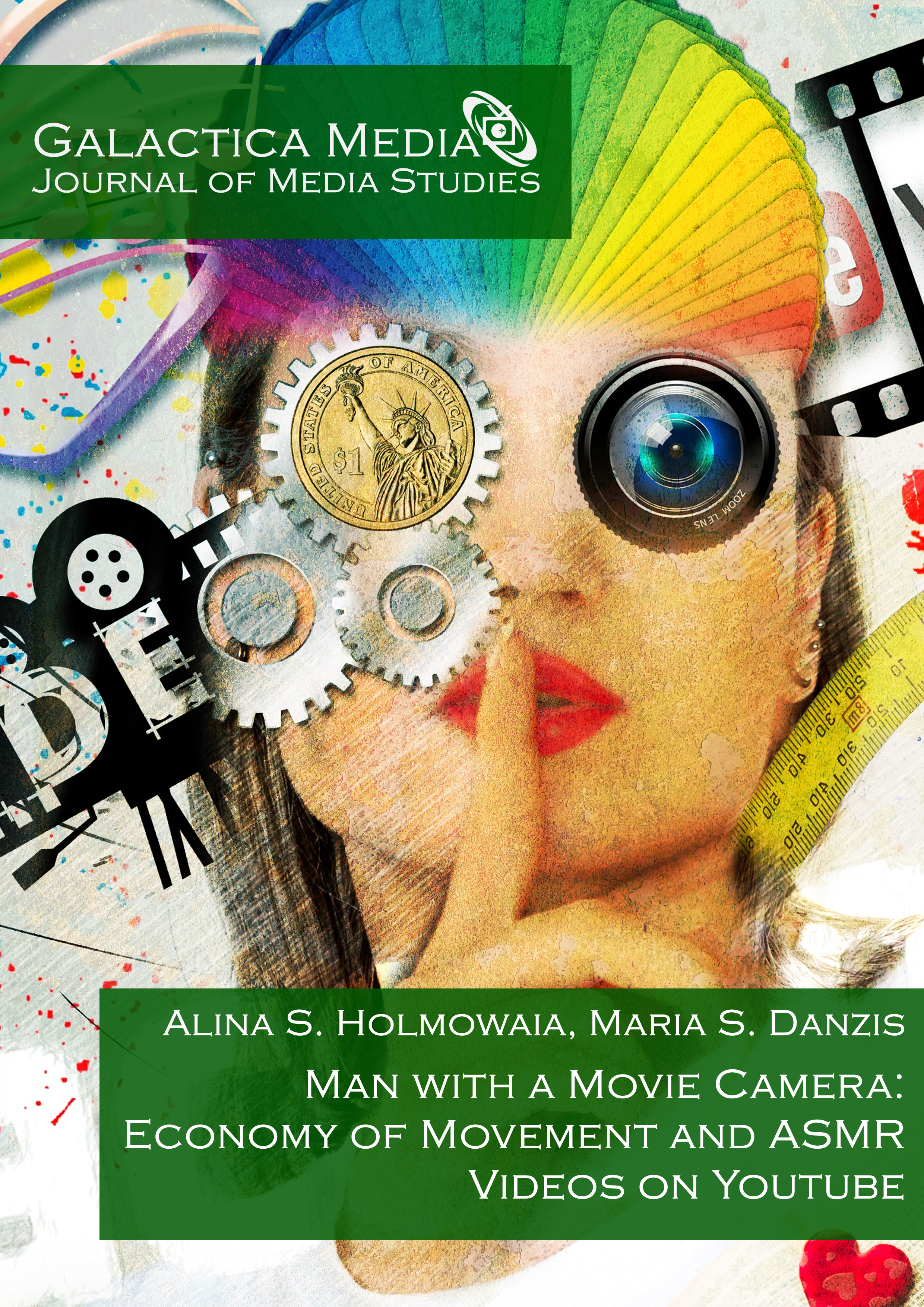Abstract
The article examines the ASMR phenomena through the perspective of early USSR philosophy of technic, especially, of the constructivist movement (Gan, Ginzburg) and of works of film director Dziga Vertov. Autonomous sensory meridian response (ASMR) is a tingling sensation that typically begins on the scalp and moves down the back of the neck and upper spine. The aim of research is to reconstruct the notion of «movement», «machine» and «technique» in constructivist writings and to transfer this notion on contemporary media culture. For the analysis authors use ASMR videos on Youtube in order to discover new possible connotations of the term «movement» in a constructivist perspective. The ASMR phenomena could be considered as a merge of Haraway’s cyborg metaphor and the constructivist conception of domestic life, movement and technique.
References
Bourdieu, P. (2005). Sociology of the social space. Moscow: Aleteya. (in Russian)
Butler, J. (1993). Bodies That Matter: On the Discursive Limits of «Sex». England: Routledge.
Burgess, J. E. & Green, J. (2009). YouTube: online video and participatory culture. Cambridge: Polity.
Castoriadis, C. (2003). The Imaginary Institution of Society. Moscow: Logos.
Freiling, R. (1997). Ohne Probe – Aspekte prozessualer Medienkunst. Retrieved from http://www.medienkunstnetz.de/quellentext/44/
Gan, A. (1922). Constructivism. Tver: Tver’s publisher. (in Russian)
Gan, A. (1923). Long Live the Demonstration of Everyday Life! Moscow. (in Russian)
Ginzburg, M. (1924). Style and Epoch. Moscow: State edition. (in Russian)
Haraway, D. (1991a). A Cyborg Manifesto. New York: Routledge.
Haraway, D. J. (1991b). Simians, cyborgs, and women: the reinvention of nature. London: Free Association Books.
Martin, S., Rosenbach, U., Schavemaker, M. & Wevers, U. (2009). How current is early video art? Panel discussion. Retrieved from https://zkm.de/de/media/video/wie-aktuell-ist-fruehe-videokunst (in German)
McLuhan, M. (1964). Understanding Media: The Extensions of Man. New York: McGraw-Hill.
It is a war! The destinies of artists during the First World War. (2014). Retrieved from https://modernartconsulting.ru/2014/11/faith-of-artists-during-wwi/ (in Russian)
Preciado, P. B. (2013). Testo Junkie. New York: The Feminist Press.
Sidorina, E. (2012). Constructivism without borders: studies and etudes on Russian Avant-garde. Moscow: Progress. (in Russian)
Snickars, P. & Vondereau, P. (eds.) (2009). The YouTube Reader. Stockholm: National Library of Sweden
Vertov, Dz. (1922). «WE: variant of manifesto». Kino-Fot, (1), 25-31
Volkart, Y. (2007). Cyborg Bodies. Retrieved from http://www.medienkunstnetz.de/themes/cyborg_bodies/

This work is licensed under a Creative Commons Attribution 4.0 International License.

